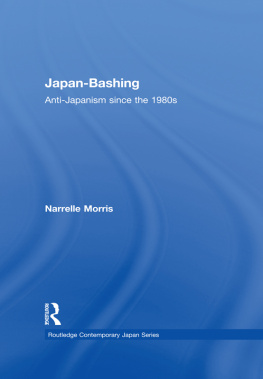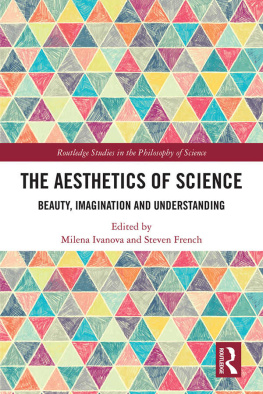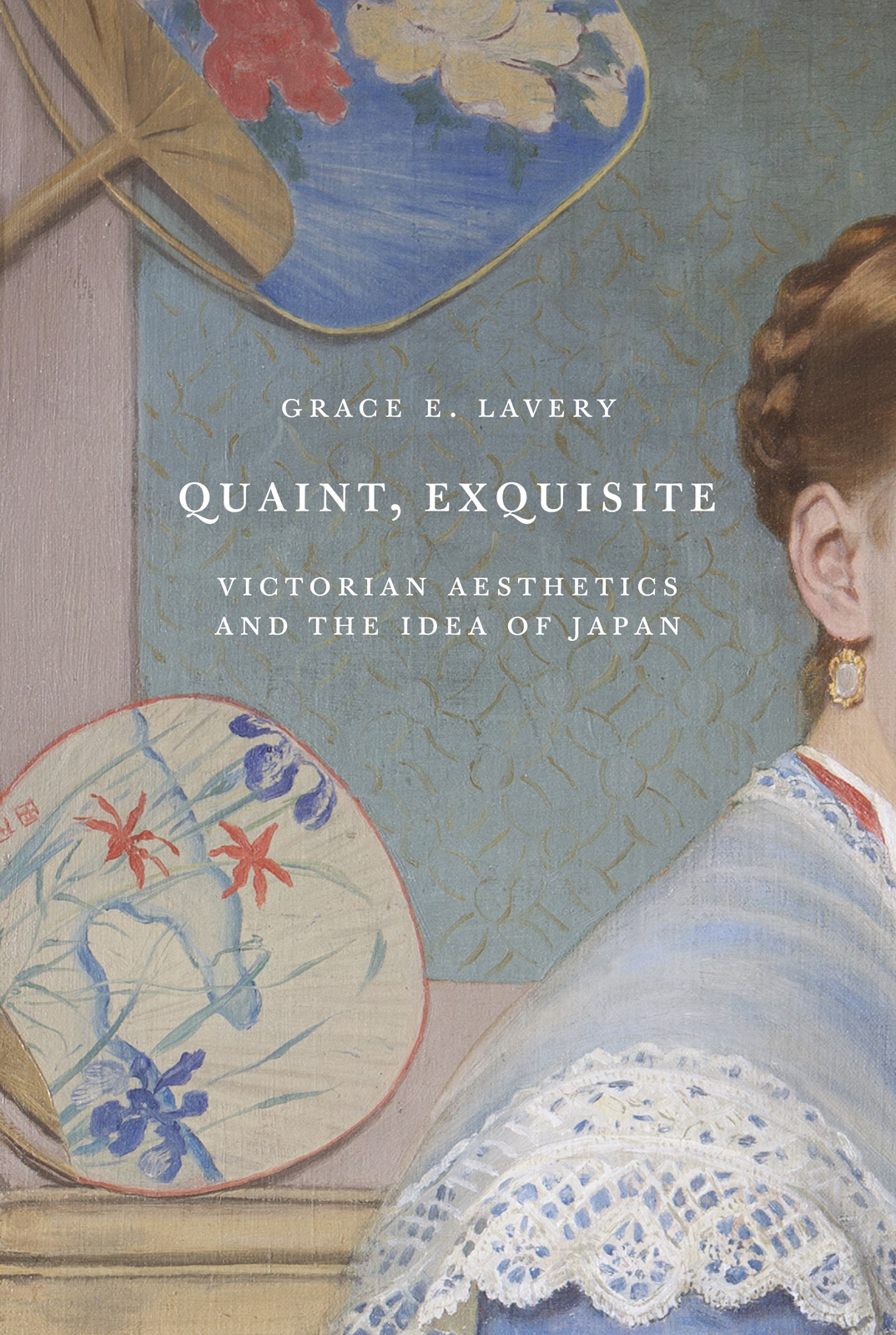Quaint, Exquisite
VICTORIAN AESTHETICS AND
THE IDEA OF JAPAN
GRACE E. LAVERY
PRINCETON UNIVERSITY PRESS
PRINCETON & OXFORD
Copyright 2019 by Princeton University Press
Published by Princeton University Press
41 William Street, Princeton, New Jersey 08540
6 Oxford Street, Woodstock, Oxfordshire OX 20 1 TR
press.princeton.edu
All Rights Reserved
LCCN 2018959174
ISBN 9780691183626
eISBN 9780691189963 (ebook)
Version 1.0
British Library Cataloging-in-Publication Data is available
Editorial: Anne Savarese and Thalia Leaf
Production Editorial: Debbie Tegarden
Jacket/Cover Design: Chris Ferrante
Jacket/Cover Credit: Portrait of Emily Caroline Massingberd, by John Collingham
Moore (18291880). Detail. Gunby Hall, Lincolnshire, UK National Trust
Photographic Library / Bridgeman
Production: Jacquie Poirier
Publicity: Jodi Price
Copyeditor: Brittany Micka-Foos
I think that if I were Japanese I would dislike most of the things that non-Japanese people write about Japan.
PIERRE BOURDIEU, SOCIAL SPACE AND SYMBOLIC SPACE (1991)
Contents
ix
PREFACE
ANOTHER EMPIRE: VICTORIAN JAPAN
THIS BOOK CONCERNS A COMPLEX IDEA about Japan that developed in the English-speaking world in the second half of the nineteenth century. That idea comprised a number of apparent oppositions: Japan was perceived as beautiful but dangerous; as ultramodern or postcapitalist, but nonetheless stilly immersed within the cocoon of tradition; as Westernized, but still as the most un-Western place conceivable. Though an ideaan imaginary phenomenonthis set of associations developed for real historical reasons: this book will therefore move, sometimes quickly, across the boundary that conventionally separates claims about real historical objects from claims about psychic or ideological phenomena. And although the idea developed in the nineteenth century, the distinctive rhetorical function with which Japan has been endowed persists to this day, and vestiges of the tendency of non-Japanese people to treat the idea of Japan as an exceptional Oriental subject can be observed in, for example, the Hokusai Great Wave Unicode emoji (one of only two emoji depicting a recognizable art-image), the ASMR-inflected art-pop of the YouTube artist Poppy; and the marketing copy of upscale knifeware. So, in order to understand the essential character of the idea, this book will occasionally grapple with such contemporary objects.
Although this version of Japan was and remains an Orientalist idea, it is not merely false. So this book does not seek to debunk it. Indeed, some of the non-Japanese writers most keen to perform that particular interpretive act the debunking of Western Japanophilia is as old as Western Japanophilia itselfhave been motivated by their own kind of bad faith. Likewise, though it was often promoted by Western writers with an incomplete understanding of their topic, it has also frequently been promoted by Japanese people themselves. It has been leveraged in the service of Japanese cultural projects at a range of scales, from individual artists petitioning for legitimacy and cultural access in the West, to the curatorial rhetoric deployed by the Japanese state to justify its imperial ambition in East Asia, an alibi that important literary figures like Yone Noguchi and Okakura Kakuzo were pressed to formulate. So although, in this book, the idea of Japan is described relatively independent of the distinctive history of the Japanese state, it does not follow that the Japan that appears here is merely a semiotic system that exists, ineffably, faraway from the observer. Rather, like other ideas, the idea of Japan tilts towards an object possibly knowable, but actually unknown, or not fully known. Orientalists writing about Japan have been, generically, quick to proclaim that they know nothing about Japan, a hyperbolic defense presumably erected to protect against the more troubling acknowledgement that they simply do not know enough. Yet that conditionthe felt inadequacy of a knowledge-practice straining to do some kind of justice to a complex objectis at the root of the idea of Japan, as it is at the root of the particular kind of thinking that that idea has continually prompted, and with which it is (this book will argue) indissociably linked: aesthetic judgment in general, and what Kant calls the subjective universal character of the judgment of taste in particular.
Because writers in the nineteenth century did, I call the aesthetic category into which the idea of Japan has been placed the exquisite. The exquisite is the point at which converge an insuperable beauty and an irresistible violence, both of which Victorians relentlessly ascribed to their idea of Japan. My book attempts to answer three questions about this aesthetic category. One: how did an Orientalist understanding of Japanese culture, derived through contemplation of a range of practices and objects like the haiku, the tea ceremony, and the art of the samurai sword, come to signal to Western observers an aesthetic universalitythe feeling that everybody in the world should and would find this object beautifulfar more powerfully than any other cultural practices, whether Orientalist, primitivist, or Euro-American? Two: how did Asian Anglophone writers of the late nineteenth and early twentieth centuries come to market their privileged access to Orientalized aesthetic immediacy, and to what political, psychic, and cultural ends? Three: which aspects of this theoretical association between the idea of Japan and aesthetic immediacy have endured (and which not) the long history of relations between Japan and the West that now distances us from the 1850s, where this books historical argument begins? As I answer those questions through close readings of a range of objectsmusical, visual, textual, material, cinematic, performativeI rely on the following argument, prosecuted in historical terms in the books introduction: the construction of Japan as an aestheticized exception to various taxonomies of race, gender, nation, ethnicity, modernity, and culture was possible because Japan confronted the West as an Other Empire; and, as a result, the aesthetic paradigm of the Other Empire has retained, in the intervening period, an immanent formal and thematic connection with Japan.
By this latter, I mean that, even now, representations of Japan compel Western writers and artists to confront the limits of their narcissism, in ways that other Orientalisms do notand because I am using a psychoanalytic framework to understand narcissism, I capitalize Other to indicate a psychic relation. In a 2016 interview the film director Quentin Tarantino said, with what passes for affection, in the last 25 years, when it comes to industrial societies, hands down the most violent cinema that exists in any one country is Japan. Sometimes grotesquely so. And as we all know, they have the least violent society of all. I take it that Tarantino believed himself to be reciting some version of a psychoanalytic argument about the ethics of sublimation: the subject called Japan has successfully offloaded its demons into aesthetic representations, and by prettifying representations of violence, Japan has abolished the real thing. But Tarantino only very barely conceals his own delight in representations of violence for their own sake: as an












